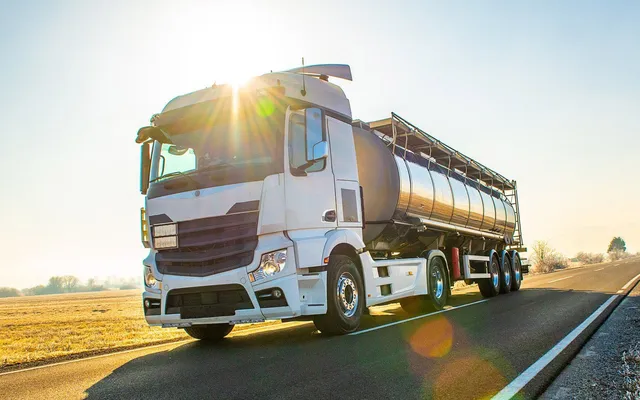Fuel transportation is no small task, especially when it involves the movement of flammable materials like gasoline, diesel, and fuel oil. The massive role bulk fuel delivery trucks play in keeping businesses, industries, and homes running smoothly comes with a responsibility for safety. These vehicles are specially designed with a combination of advanced technologies, engineering precision, and safety protocols to minimize risks. If you’re watching a fuel oil delivery truck navigating a residential area or a fuel delivery truck supplying a commercial fuel station, safety is the number one priority.
But what makes these trucks so safe? The answer lies in a range of features that go beyond simple mechanical design. From spill containment systems to fire suppression technologies, bulk fuel trucks are equipped to ensure safe and efficient operations, no matter the setting. For fleet managers, drivers, and businesses relying on fuel deliveries, understanding these safety features is essential.
Design of Bulk Fuel Delivery Trucks
The design of a bulk fuel delivery truck starts with the understanding that it carries highly combustible materials. Safety begins at the structural level.
- Reinforced Tank Design: The tanks in these trucks are made from durable materials like aluminum or stainless steel, designed to withstand pressure changes and minor impacts. The compartmentalized structure minimizes the risk of leaks during accidents.
- Double-Sealed Valves: These valves prevent accidental spills during loading and unloading. A double-seal mechanism ensures that fuel only flows when it is meant to.
- Anti-Rollover Features: To reduce risks during sudden maneuvers, trucks are fitted with low center-of-gravity designs and advanced suspension systems that improve stability.
Fire Prevention and Suppression Systems
One of the most significant risks for fuel delivery tank trucks is fire. To combat this, the trucks are equipped with multiple layers of fire safety features.
- Spark Arrestors: These devices are installed on the exhaust systems to prevent sparks from igniting spilled fuel or vapors.
- Automatic Fire Suppression Systems: Many oil delivery trucks are fitted with built-in fire extinguishing systems that activate in case of a fire. These systems can use foam or dry powder to quickly contain flames.
- Non-Sparking Tools: All tools and components used in and around the truck are made from non-sparking materials to avoid accidental ignition.
Spill Containment Systems
Spills are a major concern when transporting fuel. Even a small spill can result in environmental damage or fire hazards. To address this:
- Overfill Protection Systems: These systems monitor the fuel levels during loading to ensure that tanks are not overfilled, reducing the risk of spills.
- Drip Trays: Trucks are equipped with drip trays to catch any residual fuel that might escape during delivery.
- Emergency Shutoff Valves: Drivers can quickly cut off fuel flow in case of an emergency, preventing leaks or spills from escalating.
Driver and Fleet Safety Features
Safety doesn’t stop at the truck itself—it extends to the tools and systems supporting the drivers.
- GPS Tracking and Route Monitoring: Modern bulk fuel delivery trucks are equipped with GPS systems that allow fleet managers to monitor routes and ensure trucks avoid hazardous areas.
- Driver Training Programs: Drivers are trained to handle emergencies, including fire risks, spill management, and vehicle stabilization.
- Camera Systems: Dashcams and side-view cameras help improve visibility and reduce the risk of accidents.
Pressure Regulation Systems
Fuel tanks operate under varying levels of pressure. Without proper regulation, pressure imbalances can lead to dangerous situations.
- Pressure Relief Valves: These valves automatically release excess pressure to prevent tank ruptures.
- Vapor Recovery Systems: These systems capture fuel vapors during loading and unloading, reducing emissions and preventing pressure buildup.
Technological Innovations in Fuel Trucks
Technology has introduced new safety mechanisms into a fuel oil delivery truck to reduce human error and enhance precision.
- Leak Detection Sensors: Advanced sensors detect leaks early, allowing drivers to address the issue before it escalates.
- Collision Avoidance Systems: These systems use sensors and cameras to warn drivers of obstacles, reducing the risk of crashes.
- Real-Time Fuel Monitoring: Sensors measure fuel levels and detect discrepancies, ensuring that no fuel is lost in transit.
Safety Standards and Compliance
Every fuel delivery tank truck must adhere to strict safety standards and regulations, including:
- Department of Transportation (DOT) Regulations: These include guidelines on tank construction, inspection, and operation.
- Hazardous Material Regulations: These rules ensure that trucks carry proper labeling and documentation for the fuels they transport.
- Regular Inspections: Trucks undergo frequent safety checks to ensure they meet operational and safety standards.
Why Safety Matters in Fuel Transport?
The safety features of bulk fuel delivery trucks aren’t just about protecting the driver—they’re about safeguarding everyone on the road, the environment, and the businesses they serve. Proper safety measures:
- Prevent accidents that could harm lives and property.
- Protect the environment from contamination caused by spills.
- Ensure compliance with laws, avoiding fines and legal complications.
Practical Safety Tips for Fuel Delivery Drivers
Safety features are only effective when paired with responsible driving practices. Here are some tips for drivers:
- Inspect Before Every Trip: Always check the truck’s valves, sensors, and fire suppression systems before hitting the road.
- Stick to Safe Routes: Avoid areas with high traffic or poor road conditions whenever possible.
- Follow Loading Procedures: Ensure that all loading and unloading protocols are strictly followed to minimize risks.
Common Challenges in Fuel Delivery Safety
While the industry has made significant progress in safety features, challenges remain:
- Human Error: Even with automated systems, mistakes during loading or unloading can lead to accidents.
- Aging Equipment: Older trucks might lack modern safety features, increasing risks.
- Adverse Weather: Rain, snow, and ice can make driving conditions hazardous, even for experienced drivers.
In A Nutshell
Safety is the cornerstone of the fuel delivery industry. High-tech sensors and carefully regulated tank designs ensure bulk fuel delivery trucks minimize risks while maximizing efficiency. These safety measures protect drivers, the environment, and the fuel-dependent industries that keep the world moving. In the world of fuel transportation, safety doesn’t take shortcuts, and neither should you.
At Refined Fuel Trucks, we specialize in delivering state-of-the-art fuel delivery vehicles equipped with advanced safety features. Whether you need a fuel oil delivery truck for residential operations or a fuel delivery tank truck for commercial needs, our trucks are designed with safety and efficiency in mind. With years of industry expertise, we provide solutions tailored to your requirements, ensuring compliance with safety standards while optimizing performance.
When it comes to reliable and secure fuel transportation, trust Refined Fuel Trucks to lead the way.
Also Read
- ► What Is a Premed Application?
- ► How a Digital Marketing Course Can Help You Stand Out in a Competitive Job Market?
- ► Manufacturing Mutual Funds: Secret to Growing Wealth with Booming Sectors
- ► Understanding the US CMA Course and Benefits in Delhi
- ► How Instant Domain Search Helps You Choose a Strong Domain for Your Business
- ► Exploring the Best Strategies for Choosing Cheap Flight deals
- ► تحسين أعمالك من خلال خدمات التخزين في السعودية
- ► خدمات التخزين في المملكة: الحل الأمثل لاحتياجاتك اللوجستية
- ► تحسين الأعمال من خلال خدمات التخزين في السعودية
- ► Transform Your Walls with Stunning Texture Paint for a Unique Finish
- ► Is it beneficial to get proper assignment help for completing Website Design and Development assignments?
- ► Endotoxin Free Silver Nanoparticles for Advanced Biomedical Research
- ► How to Create UPI ID and Manage Multiple Accounts Effortlessly
- ► The Essential Guide to Warehousing Services in Saudi Arabia
- ► Online Ordering System for Improved Customer Experience





